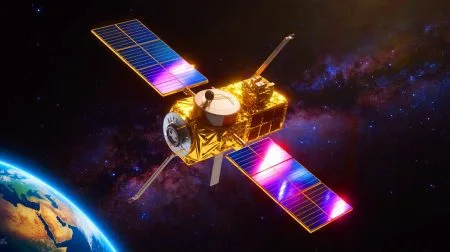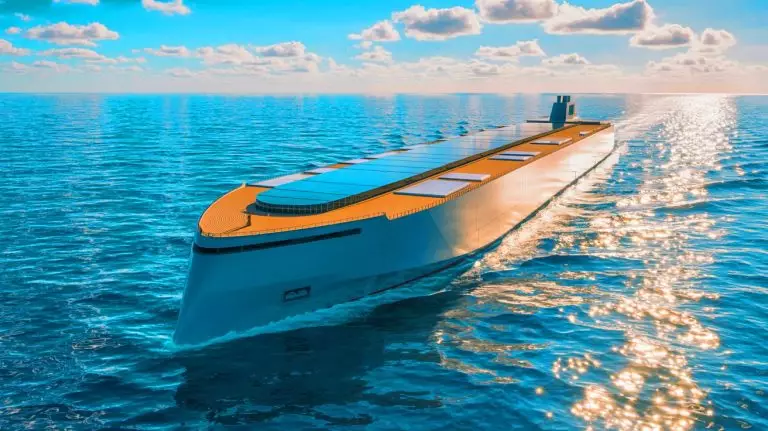| IN A NUTSHELL |
|
In a groundbreaking move towards sustainable maritime transport, a monumental electric ship has recently been launched in Tasmania. This massive catamaran, designed to connect Argentina and Uruguay, represents a significant leap forward in eco-friendly travel. The vessel boasts a colossal energy capacity, comparable to that of hundreds of electric cars, marking a pivotal advancement in the quest for greener seas. As the largest electric ship ever constructed, it stands as a testament to the potential of renewable energy in transforming maritime industries.
A Titanic Battery: Equivalent to 769 Renault 5s
The silent titan of the seas has made its debut in Hobart, Tasmania. Australian shipyard Incat has officially launched the Hull 096, a 100% aluminum catamaran that redefines the standards for electric navigation. At 427 feet long, it holds the title of the world’s largest purely electric-powered vessel, capable of accommodating 2,100 passengers and 225 vehicles. Commissioned by the South American operator Buquebus, this giant embodies what Robert Clifford, Incat’s chairman, describes as:
“The most ambitious, complex, and significant project ever undertaken by the company in over forty years.”
https://www.sustainability-times.com/energy/chinas-bacteria-battery-shocks-scientists-99-efficiency-and-self-charging-tech-could-obliterate-conventional-power-systems/
The heart of this revolutionary ship lies in its energy storage system (ESS). With over 551,000 pounds of batteries on board, it boasts a total capacity exceeding 40 megawatt-hours (MWh). To put this into perspective, this energy capacity is equivalent to approximately 769 batteries of the new Renault 5 E-Tech electric (52 kWh model). This is simply four times more than any other maritime installation of its kind to date. Supplied by technology partner Wärtsilä, this ESS powers eight electric water jets, preferred over traditional propellers for navigating the shallow waters of the Rio de la Plata. Charging will occur via 40 MW points on each side of the crossing.
Australia at the Forefront of Naval Innovation
This launch represents a significant milestone in the fight against greenhouse gas emissions from maritime transport, a sector responsible for nearly 3% of global emissions. As the International Maritime Organization (IMO) pushes towards lower-carbon fuels by 2028, the Hull 096 demonstrates that large-scale zero-emission solutions are already a reality. “We are not just building a vessel; we are building the future,” stated Stephen Casey, CEO of Incat. This ship proves that “large-scale, low-emission transport solutions are not just possible; they are ready now.”
The completion of this project positions Incat and Tasmania at the forefront of global naval innovation. Built in an Australian state where nearly 100% of electricity comes from renewable sources, the Hull 096 is not only the largest electric ship but also one of the most significant manufactured objects ever exported by Australia. It is a demonstration of Australian expertise and ingenuity, paving the way for a new era of more environmentally friendly navigation. Sea trials are scheduled later this year on the Derwent River before the vessel heads to South America.
Economic and Environmental Implications
The Hull 096 is poised to make a significant impact on both the economy and the environment. By reducing the reliance on fossil fuels, this vessel sets a new benchmark for energy efficiency in maritime transport. The use of aluminum for the hull, making it one-third lighter than a steel equivalent, further enhances its energy efficiency. On board, passengers will enjoy a duty-free retail space of 24,757 square feet, the largest ever created on a ferry. This opens up new economic opportunities for businesses and enhances the travel experience for passengers.
The launch of the Hull 096 serves as a powerful example of what can be achieved when technological innovation meets environmental consciousness. It underscores the growing importance of sustainable practices in the maritime industry and sets a precedent for future developments. The economic benefits extend beyond the ship’s operations, potentially inspiring similar projects worldwide and creating a ripple effect in the global economy.
The Future of Maritime Travel
As the Hull 096 prepares to make its journey between Buenos Aires, Argentina, and Uruguay, it stands as a beacon of what the future of maritime travel can be. This type of regular route is considered an excellent use case for testing and optimizing the electrification of ships, as highlighted by Dr. Liam Davies of RMIT University. The vessel’s success could pave the way for more electric ships, reducing the carbon footprint of maritime transport significantly.
With the world increasingly focusing on reducing emissions, the Hull 096 represents a critical step forward. It challenges traditional notions of what ships can achieve and encourages the maritime industry to embrace sustainable technologies. As we look to the future, will more industries follow suit and invest in electric solutions to combat climate change?
Did you like it? 4.4/5 (30)






Wow, this ship is a game-changer! 🌍 Can’t wait to see more like it.
769 Renault 5s worth of battery power? That’s mind-blowing! How long does it take to charge?
Why was Tasmania chosen as the launch site? Seems a bit random. 🤔
Love the initiative, but what happens to these massive batteries when they reach end-of-life?
Seems expensive! Will ticket prices be affordable for the average traveler?
Thank you for sharing this article. It’s inspiring to see such innovative projects.
How does this ship compare in cost to traditional ferries? Is it worth the investment?
I’m skeptical. How can they ensure the batteries are safe from water exposure?
Buenos Aires to Montevideo is around 200km. Tasmania to Buenos Aires is 000’s of kms, even island hopping along the way, where there is no charging infrastructure. I’m guessing it will be a bunker fuel burning tug that gets it to South America?